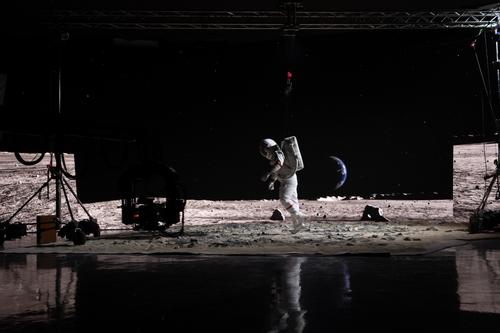Mo-Sys to launch bMR at IBC
Mo-Sys and Erizos Studios partner to offer a hybrid solution for broadcast LED virtual studios with MOS on-air graphics.
 Mo-Sys bMR
Mo-Sys bMR
Mo-Sys Engineering will launch a new product called bMR (broadcast mixed reality) at the IBC exhibition in Amsterdam in September.
Mo-Sys bMR is a new category of product that combines an LED content server with a MOS controlled on-air graphics system powered by Unreal graphics. The product has been designed for broadcasters who want to transition to an LED based virtual studio, with MOS controlled on-air graphics based on Unreal, and is targeted at sports, news, and current affairs programming.
In developing bMR, Mo-Sys has partnered with on-air graphics specialist Erizos Studios, and combined Erizos’ expertise in broadcast graphics and MOS based news/sports workflows, with Mo-Sys’ expertise in LED virtual studios and precision camera tracking.
Equipped with virtual studio software licenses for green screen, Mo-Sys bMR enables broadcasters to transition from their current green screen virtual studio and incumbent on-air graphics solution, to bMR, but in two stages where either the virtual studio or the on-air graphics are upgraded first.
Mo-Sys bMR’s on-air graphics system offers three ways of displaying templated data-fed graphics; standard 2D keyed graphics, keyed 3D graphics, or 3D ‘in-scene’ Unreal element graphics. The system conforms to MOS protocol and can be controlled by commonly available newsroom computer systems (NRCS) such as Octopus, ENPS, or other popular NRCS. It is based on web browser technology and uses a fully redundant server/client architecture. Importantly, it is an on-premise solution and is not cloud-based.
bMR’s LED content server can drive any size/shape/pixel pitch LED virtual studio (equipped with sufficient render nodes), with the base system able to drive an LED studio with up to 8million pixels. The system offers multi-camera switching capability up to UHD4K resolution, enabling multiple cameras to be used with an LED volume, where switching between cameras is orchestrated with the LED wall updating correctly. Set extensions with simultaneous augmented reality (AR) are also possible, with the delay between the Unreal graphics perspective displayed on the LED wall, and the camera’s actual position, the lowest on the market today.
Mo-Sys will offer bMR customers a service creating custom user interfaces for controlling their LED studio virtual scene, simplifying the operational load. In addition, bMR offers the ability to create custom interfaces for on-air graphics, simplifying connecting data sources to graphic templates, and driving multiple graphic elements in use simultaneously.
Visit Mo-Sys at stand 8.A49 and on the AOTO stand (7.C09) during IBC2022 to meet the team and see bMR in action.




